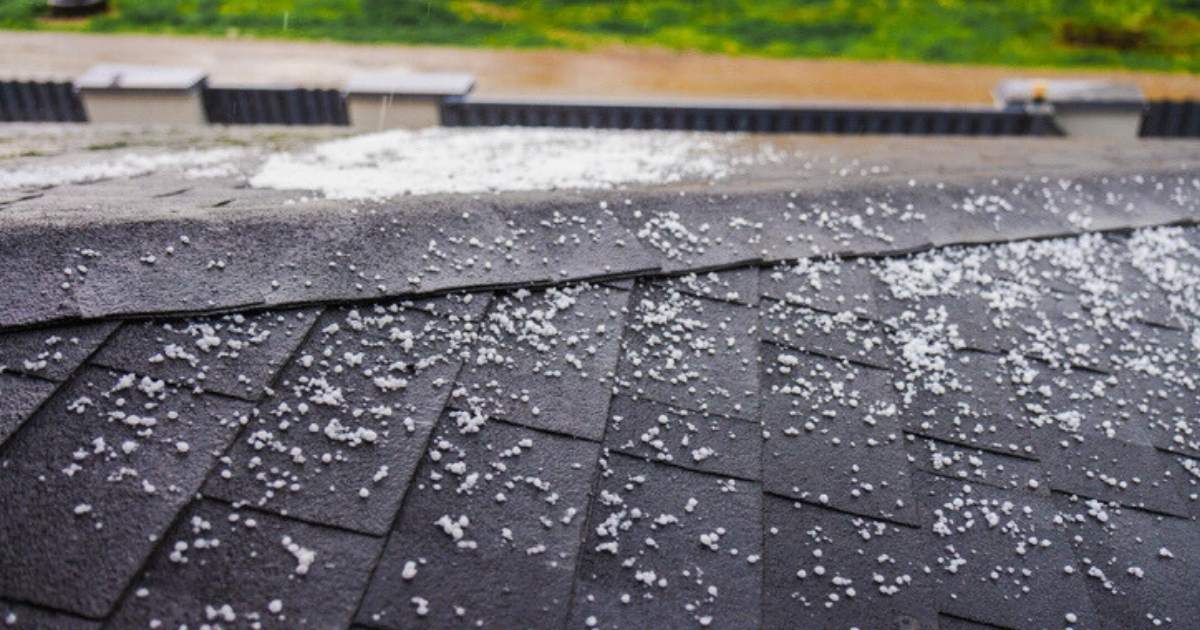When a hailstorm rolls through the DFW Metroplex, it can leave your roof vulnerable to leaks, structural issues, and further weather damage. The minutes and hours following a hail event are critical for protecting your home and setting yourself up for a smooth repair process. Whether you're facing minor dents or significant damage, knowing exactly what steps to take can help you avoid costly mistakes and get your roof back in shape quickly.
Don't wait to address hail damage—every day counts. Contact Pappas Roofing and Construction through our online contact form or call (972) 806-9791 right now for an emergency roof inspection.
Ensure Everyone's Safety First
Before you do anything else, make sure your family is safe. Hailstorms often bring lightning, high winds, and heavy rain that can continue after the hail stops falling. Stay indoors until the weather has completely cleared and local authorities have confirmed it's safe to go outside. If you hear unusual sounds from your attic or see water coming through your ceiling, move to a safe area of your home away from the affected rooms.
Check for broken windows, damaged siding, or holes in your roof from inside your home. If you notice any openings that are allowing rain to enter, place buckets or containers underneath to catch water and prevent further damage to your floors and belongings. Never attempt to climb onto your roof during or immediately after a storm, especially if conditions are still wet or windy.
Document the Damage Thoroughly
Once it's safe to go outside, start documenting everything you can see from ground level. Take clear photos and videos of your roof from multiple angles, capturing any visible dents, missing shingles, or damaged flashing. Don't forget to photograph other areas of your property that may have been affected, including your gutters, downspouts, siding, windows, and outdoor structures like sheds or fences.
Time-stamp your photos if possible, or make note of the date and time you took them. This documentation will be invaluable when you file an insurance claim. Walk around your entire property and look for hail stones on the ground—photograph these as well, ideally with an object nearby for size reference like a ruler or coin. The size of the hail can directly impact the severity of damage to your roof and the likelihood of insurance coverage.
Check for Interior Water Damage
Head to your attic if you have safe access to it. Look for signs of water intrusion such as wet insulation, water stains on the wood framing, or dripping water. Check your ceilings throughout the house for any new stains, discoloration, or soft spots that might indicate a leak. Even small leaks can lead to mold growth and structural damage if left unaddressed.
Document any interior damage with photos as well. If you find active leaks, place buckets or towels to minimize water damage while you wait for professional help. Keep in mind that some leaks may not appear immediately after a storm—they might show up during the next rainfall—so stay vigilant in the days following the hail event.
Contact Your Insurance Company Promptly
Reach out to your homeowner's insurance company as soon as possible to report the hail damage. Most policies have specific timeframes within which you must file a claim, and waiting too long could jeopardize your coverage. When you call, have your policy number ready and be prepared to describe the damage you've observed.
Ask your insurance representative about the following:
- What your policy covers regarding hail damage
- Whether you need to get your own estimates or wait for their adjuster
- The deductible amount you'll be responsible for
- The timeline for the claims process
- Any deadlines you need to be aware of
Your insurance company will typically schedule an adjuster to come inspect your property. Be present during this inspection if possible, and share all the documentation you've gathered. The adjuster will assess the damage and determine what repairs your policy will cover.
Arrange for a Professional Roof Inspection
While your insurance adjuster will evaluate the damage, it's wise to have an independent residential roofing professional inspect your roof as well. A qualified roofing contractor has experience identifying all types of hail damage, including subtle issues that might not be immediately obvious. They can spot compromised shingles, damaged underlayment, and weakened areas that could lead to problems down the road.
Choose a local, licensed, and insured roofing company with experience handling hail damage in Texas. Be cautious of "storm chasers"—contractors who travel from out of state following severe weather and may not be around to honor warranties or address issues after the work is complete. A reputable local contractor will provide a detailed inspection report and help you understand the full extent of the damage.
Take Temporary Protective Measures
If your roof has sustained significant damage that's allowing water into your home, you may need to take temporary protective measures while you wait for repairs. For small holes or damaged areas, you can carefully place a tarp over the affected section, but only if you can do so safely from a ladder without climbing onto the roof. Use boards and rope or bungee cords to secure the tarp so it doesn't blow away in wind.
However, it's generally better to call a professional for emergency tarping services. They have the proper equipment and safety gear to secure your roof without causing additional damage or putting themselves at risk. Many roofing companies offer emergency services specifically for situations like this. Keep in mind that temporary repairs are just that—temporary—and you'll still need permanent repairs as soon as possible.
Understand Common Types of Hail Damage
Hail can affect your roof in several ways, and understanding what to look for can help you communicate effectively with contractors and insurance adjusters. Asphalt shingles, which are common in Texas homes, may show bruising or dents where the protective granules have been knocked off. These damaged spots appear as dark circles or exposed asphalt and leave your roof vulnerable to UV damage and water infiltration.
You might also notice cracked or broken shingles, particularly if the hail was large or fell with significant force. Metal components like flashing, vents, and gutters can become dented or bent. Even if the damage seems minor from the ground, remember that hail impact can compromise the integrity of your roofing materials and shorten their lifespan significantly. This is why professional assessment is so important.
Avoid Common Mistakes After Hail Damage
In the stress following a hailstorm, homeowners sometimes make decisions they later regret. One common mistake is hiring the first contractor who knocks on your door without properly vetting them. Take time to research companies, check references, and verify licenses and insurance. Another mistake is starting repairs before your insurance company has inspected the damage—this could complicate your claim or result in denied coverage.
Don't sign any contracts with clauses that seem unclear or make you uncomfortable. Never allow a contractor to negotiate directly with your insurance company without your involvement and oversight. Be wary of anyone who offers to waive your deductible or promises to replace your roof regardless of the actual damage—these are red flags for potential fraud.
Get Multiple Estimates for Repairs
Once you've had your roof inspected and your insurance claim is underway, obtain written estimates from at least two or three reputable roofing contractors. These estimates should detail the scope of work, materials to be used, project timeline, and total cost. Comparing estimates helps you understand what a fair price is and ensures you're getting comprehensive repairs.
Look beyond just the bottom-line cost. Consider each company's reputation, warranty offerings, and communication style. The lowest bid isn't always the best choice if it means cutting corners on materials or workmanship. Ask questions about anything you don't understand in the estimates, and make sure all promises are put in writing before work begins.
Know Your Rights as a Texas Homeowner
Texas law provides certain protections for homeowners dealing with insurance claims and roof repairs after storm damage. You have the right to choose your own contractor rather than using one recommended by your insurance company. You also have the right to be present during your insurance adjuster's inspection and to challenge their assessment if you believe it's incomplete or inaccurate.
If your insurance claim is denied or you believe the settlement offered is insufficient, you can request a re-inspection or hire a public adjuster to advocate on your behalf. Keep detailed records of all communications with your insurance company, including dates, times, and the names of representatives you speak with. This documentation can be crucial in the event of disputes.
Prepare for the Repair Process
Once you've selected a contractor and your insurance claim is approved, you'll need to prepare for the repair work. Clear your driveway and surrounding areas to provide easy access for the roofing crew and their equipment. Move vehicles to a safe location away from the work zone. Protect outdoor furniture, grills, and decorative items by relocating them or covering them with tarps.
Inside your home, remove valuable or fragile items from walls, shelves, and surfaces, especially in rooms directly below where the work will be done. Vibrations from roofing work can cause items to shift or fall. If you have pets, plan to keep them indoors and away from the work area for their safety. Let your neighbors know about the upcoming work so they can prepare as well.
Learn from the Experience
After your roof has been repaired, take steps to be better prepared for future storms. Keep your roof in good condition with regular inspections and maintenance. Trim overhanging tree branches that could cause additional damage during high winds. Consider upgrading to impact-resistant shingles during your hail damage repair, which may also qualify you for insurance discounts.
Document the repairs you've had done and keep all receipts and warranty information in a safe place. Update your home inventory with photos of your newly repaired roof. Review your insurance policy annually to ensure you have adequate coverage, especially if you've made improvements to your home.
Get Expert Help With Your Hail-Damaged Roof
Hail damage won't fix itself, and waiting only increases the risk of leaks, mold, and structural problems. The team at Pappas Roofing and Construction has helped countless Texas homeowners navigate the aftermath of hailstorms with thorough inspections, quality repairs, and support throughout the insurance process. We understand the unique challenges that DFW weather presents and we're here to help you protect your home.
Reach out through our online contact form or call (972) 806-9791 today to schedule your roof inspection.


